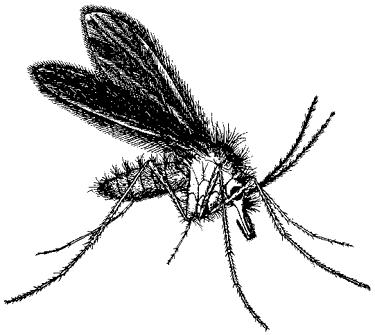![]()
Write us!
socialistviewpoint@pacbell.net
Batten Down the Mosquito Netting
By David H. Hackworth

Since the war kicked off in Iraq, the medical team at Walter Reed Army Medical Center (WRAMC) has been putting in long hours—especially the overtaxed orthopedic staff charged with caring for the thousands of soldiers who’ve lost arms and legs.
The stalwart medics and nurses who care for our terribly wounded there carry an especially heavy mental burden. A medic at WRAMC told me, “Believe me, images of the carnage stick in your head—like the 19-year-old kid with no arms whose mom was holding the phone for him.”
Now a new wave of unexpected horror, leishmaniasis is arriving at WRAMC—which has the only accredited leishmaniasis lab in the United States—and its dedicated docs are burning the midnight oil to find a treatment. A model predicts that 1 percent to 4 percent of our soldiers in Iraq can expect to be hit by this potentially deadly parasite, delivered by the bite of infected sand flies as common in the Middle East as fleas on a wild dog.
So far, more than 500 soldiers have been diagnosed with “The Leish.” Since there’s presently no approved protocol for the docs in the field, most of those infected have been evacuated from Iraq directly to Walter Reed. And as each day passes, these medical casualties are increasing, as more of our grunts come down with this painful and sometimes deadly affliction.
The docs say it takes anywhere from weeks to months to years for the disease to manifest, and when it does, it’s ugly—“huge, ulcerated nodules the size of a tumor on faces and hands and other body parts which leave long-term scars.” Stricken soldiers can have as many as 20 to 30 festering boil-like sores.
Some docs at WRAMC worry that we could be looking at a ticking time bomb, since leishmaniasis might take as long as 20 years to show up. Thousands of our troopers who fought in Iraq and were heavily exposed to sand flies while pushing toward Baghdad are now back home—and they might have what the troops call “The Baghdad Boil” without having a clue.
Col. Dallas Hack, who heads up WRAMC’s Preventive Medicine Division, is more upbeat. “By next season the numbers will be way down,” he told me.
Hopefully, Col. Hack is right. The follow-on generation of occupation soldiers to Iraq who are presently deploying have been well-briefed on this scourge and are taking the necessary precautions.
To date, the majority of cases have been the non-life-threatening cutaneous surface variety. Only two cases of its more vicious cousin—visceral leishmaniasis, which can be terminal—have checked into WRAMC. But because both stricken soldiers returned home from Afghanistan a year ago, docs caution that these could be just the “tip of the iceberg.”
The best protection in places like Iraq, Afghanistan and throughout Southwest Asia—where the sand flies dwell by the millions, and where we have thousands of GI Joes and Jills—is what the Army calls Preventive Medicine. That means small-unit leaders must ensure that their troops take every possible insect-control precaution: keeping their skin covered; spraying potentially infected areas; sleeping under mosquito nets and using insect repellent on themselves and their uniforms to keep the sand flies away; not sleeping in low-lying areas where sand flies thrive; and staying away from dogs, which are major carriers.
From a military perspective, a sand-fly bite can have the same consequence as a bullet: leaving an empty hole in a unit team. So far, the Army has lost almost a battalion of soldiers to this bug.
Until the docs got a handle on it, malaria was a huge problem in Vietnam—where it pummeled combat and logistical supporting strength when thousands of soldiers had to be evacuated for treatment. But unlike leishmaniasis, most cases could be treated in theater and only the most serious had to be sent to the States.
In time, the docs at Walter Reed will conquer leishmaniasis. But just as with malaria, the immediate solution can be found in the old adage, “An ounce of prevention is worth a pound of cure.” Coupled, of course, with strong hands-on leadership from the top to the bottom making it happen.

Write us
socialistviewpoint@pacbell.net